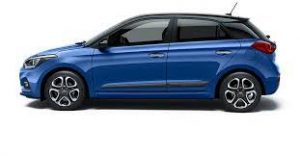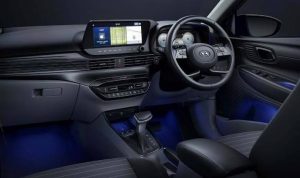Hyundai i20

Hyundai has had a great run in the premium hatchback category with the i20 for over 12 years. The way it offers the perfect blend of practicality, space, comfort, equipments and the ease to drive around, has appealed to many who often upgrade from one generation to the next. And now, there is a new one that wants to rewrite the i20 story.
Previous generations of the i20 have all been designed with the European markets in mind and they all looked the better for it. For this generation, the ‘Elite’ name has been dropped and it has grown a fair bit in width around 41mm. It is also much stiffer using 40 percent stiffer materials while being 100 kilos lighter than before. It also has a Cd of 0.33, the lowest in its class. While the car looks wide, the raised suspension spoils the stance. The styling is a bit on the daring side, with exaggerated lines and too many details fighting for attention. The side profile has two or more creases that feel too many. The front is set low, the rising belt line only accentuating that. The grille is massive and has a lot of detail. There is so much of glass area with the entire C pillar being a quarter glass too. The rear styling is perhaps the most polarizing bit, with massive tail lamps angled downwards and connected by a strip. The styling may not to be everyone’s tastes, but as with most adventurous Hyundai designs, one will get used to it.

It’s a similar story with the interiors too. It’s not gonna blow you away with the design or quality and honestly, it doesn’t have the wow factor of the Grand i10 interiors which is from a lower segment. The front seats are quite supportive and with the dashboard set at a lower height, gives you a great view ahead. The rear seat feels much wider now and has more legroom than ever. Tall people will be comfortable here. The dashboard has Audi inspired lines that continue along the air con vents, the instrumentation is now digital, although it’s not as good as the one in the international version, and has the reversed tacho that we are not fans of. The 10.25 inch touch screen is massive and has a lot of features like Android Auto, Apple Car Play, voice recognition, BlueLink, over-the-air map updates etc. The new i20 comes loaded with six airbags, auto headlamps, ESP, tyre pressure monitoring system, Bose audio with 7 speakers, sunroof, cruise control, hill assist, leatherette seats, air purifier, ambient lighting etc. However, it doesn’t get auto dimming rear view mirrors, rain sensing wipers, 60:40 split rear seat etc
Of the three engines on offer, the 1.5 litre diesel is our pick. It’s easily the best in its class, with good drivability, ample refinement, adequate power and stunning fuel efficiency. It’s the same unit that powers a host of Hyundai and Kia models and though it is the 100bhp and 245Nm state of tune, it’s still impressive here in the new, lighter i20. The clutch is well weighted and the gears are effortless to slot into, making this a very easy car to drive in town. It pulls well off-boost, gets a bump in power as it nears 2000rpm and has steady power all the way to its 4800rpm redline. It does get noisy at high revs though and it is best to upshift early, with this engine. Performance isn’t bad with 100kmph coming up in 11.2 seconds. We also briefly drove the 118bhp, 175Nm 1.0L turbo petrol with its dual clutch automatic, which is also good. The engine had adequate refinement for a 3cyl although there are some vibrations present. The dual clutch auto isn’t Volkswagen DSG quick, but does a good job. Still, with the diesel being so refined and the torquey nature making it just as enjoyable, we quickly went back to that. The difference in price between petrol and diesel fuels might be negligible these days but the diesel still holds the advantage of efficiency and if you do a lot of highway miles, it makes sense to buy the diesel.

Another reason why we preferred the diesel is the way it handles. As is the case with most Hyundais, it runs a stiffer front setup. And to top it off, this gen of the i20 has got the handling almost right, despite the comfy suspension setup and awful Ceat SecuraDrive tyres. The steering is more precise than it has ever been in an i20, the chassis is quite stiffer this time and the car is very eager to turn in to corners displaying decent mechanical grip. It has a newfound balance in corners where the old one used to understeer. Unlike the old i20s which had their front-end wash wide, when this one runs out of grip, all four wheels slide almost equally. Don’t expect an out and out driver’s car, but it is slowly getting there and you would even enjoy this, with a set of good tyres and may be a slightly uprated suspension.
The ride quality is improved too and it has a big car feel to it. Straight-line stability is good and it can deal with uneven surfaces quite well. There is very little bobbing motion and the damping seems to be well judged for the most part. The car feels more mature in the way it absorbs bumps and potholes. Braking is re-assuring, but it certainly begs for more grip from the tyres.

It’s easy to dismiss the i20 as being over-styled and overpriced but this one is quite impressive that for someone in the market for one, it deserves a proper look. It is spacious, comfortable, well equipped, it drives well, is adequately fast, very refined, efficient and what not. In the sea of compact SUVs that are swarming our market, it’s refreshing to see a good ‘car’ for a change.
Pic Courtesy: google/ images are subject to copyright








